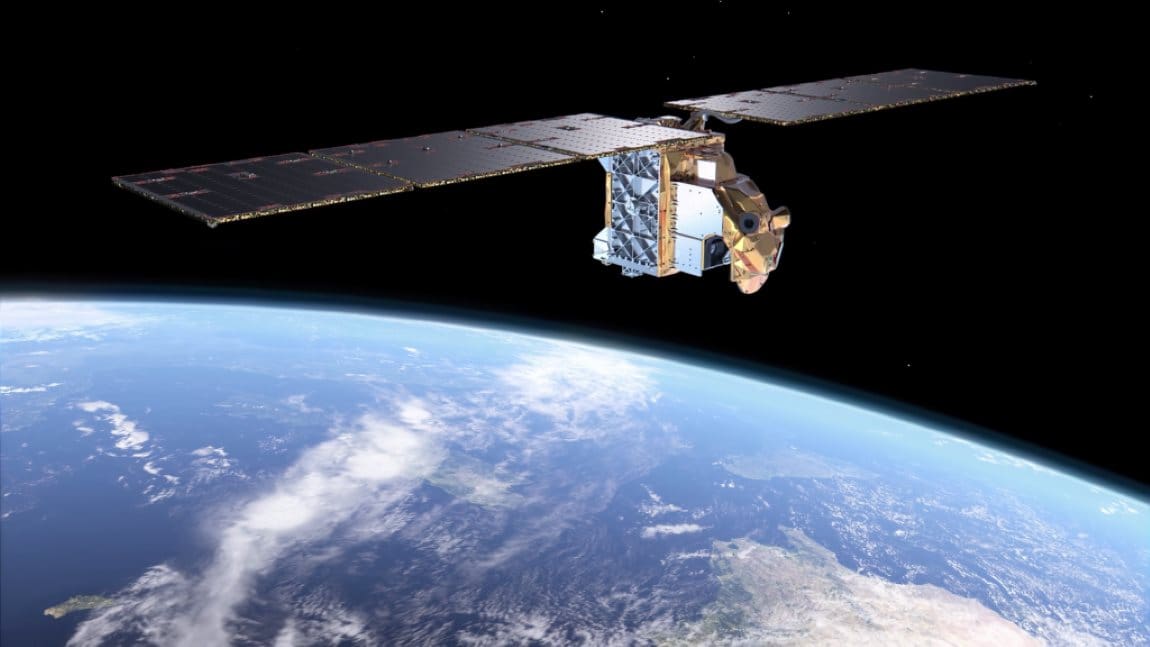The European Space Agency’s (ESA) Arctic Weather Satellite (AWS) is set to revolutionize weather forecasting and climate monitoring, particularly in the Arctic, by collecting highly accurate data for the first time.
Launched in mid-August 2024, the AWS is equipped with advanced microwave radiometer technology, which incorporates low-noise amplifiers (LNAs) from Fraunhofer Institute for Applied Solid State Physics IAF. These LNAs, based on world-leading indium gallium arsenide (InGaAs) metamorphic high-electron-mobility transistor (mHEMT) technology, are essential for capturing and processing weak signals to provide precise measurements of temperature and humidity.
Amplifiers enhancing climate and weather monitoring

Fraunhofer IAF’s LNAs are integral to the AWS mission, which aims to enhance global climate observations and improve weather forecasting accuracy, especially in the Arctic, a region heavily affected by climate change. With plans to scale up into a constellation of similar satellites, the AWS is expected to lay the foundation for improved short-term weather forecasts (nowcasting) and global climate monitoring, benefiting regions worldwide.
The primary role of LNAs is to amplify weak signals while minimizing background noise, making signals easier to detect and analyze.
Dr. Fabian Thome, Deputy Head of the High Frequency Electronics Business Unit at Fraunhofer IAF, emphasizes the importance of their role: “The more powerful a low-noise amplifier is, the more accurately and reliably a system can collect data. They play a major role in satellite-based Earth observation, as the microwave radiation that reaches the satellite radiometer is very weak.”
Key features of AWS radiometer
The AWS microwave radiometer captures natural microwave radiation emitted by the Earth’s surface, which is then processed by four receivers. These receivers, supported by Fraunhofer’s amplifiers, cover a wide frequency spectrum from 50 to 325 GHz, allowing precise measurements under diverse weather conditions. The radiometer’s 19 channels measure temperature, humidity, and cloud formations at various frequencies, providing high-resolution vertical profiles that are crucial for understanding the Arctic’s dynamic environment.
Fraunhofer IAF’s contributions include four LNAs for three different frequency ranges: around 54 GHz, 89 GHz, and 170 GHz. The development of these amplifiers involved advanced work with InGaAs-based mHEMT technology, allowing for significant improvements in signal sensitivity. For example, the LNA operating at 54 GHz achieved a low noise figure of 1.0 to 1.2 dB and a gain of 31 to 28 dB, setting new benchmarks for performance.
Collaborative effort in satellite development
The success of these LNAs is the result of a close collaboration between Fraunhofer IAF and ACC Omnisys, the Swedish firm responsible for building the radiometer system for OHB Sweden and ESA. Fraunhofer IAF provided end-to-end solutions, handling everything from circuit design to module integration. The institute’s advanced research infrastructure and cross-disciplinary teams ensured that the LNAs were fully qualified for space use, ready for integration with the AWS radiometer.

Future plans: expanding the constellation
The AWS marks the beginning of a larger project that could lead to the creation of the EUMETSAT Polar System-Sterna (EPS-Sterna) constellation. If the AWS mission proves successful, ESA plans to launch a series of identical satellites, designed to operate in multiple polar orbits.
This constellation of six satellites will collect long-term weather data, helping to improve both short-term and long-term forecasts, particularly for the polar regions.
Scheduled for 2029, the EPS-Sterna system will consist of 18 satellites over three orbits, with plans for additional replacements to ensure continuity. This initiative aims to provide enhanced resilience in space missions, where the failure of any satellite in the constellation can be quickly compensated for by others in the network.
The new space approach
ESA is embracing the New Space approach for the AWS mission, aiming for faster project timelines and reduced costs compared to traditional space missions. Weighing just 150 kg, the AWS is part of a trend toward smaller, more agile satellites. As demonstrated by the AWS’s rapid development – from project inception to launch in just three years – the New Space model prioritizes efficiency and flexibility. This approach offers advantages such as rapid deployment of additional satellites in case of failures and the adaptability to extend or shorten missions based on evolving needs.
Fraunhofer IAF’s cutting-edge technology is at the forefront of this innovation, playing a critical role in advancing the capabilities of satellite-based Earth observation. As climate change accelerates, particularly in vulnerable regions like the Arctic, tools like the AWS will become increasingly vital for monitoring and responding to global environmental challenges.
By leveraging state-of-the-art LNAs, the AWS mission not only promises to enhance weather and climate forecasting but also signals a shift toward more agile, resource-efficient space missions that can adapt to the demands of a rapidly changing world.
Article Source:
Press Release/Material by Fraunhofer Institute for Applied Solid State Physics (IAF)
Featured image: Artificial impression of the Arctic Weather Satellite in its orbit at an altitude of approx. 600 km Credit: © ESA | Mlabspace




